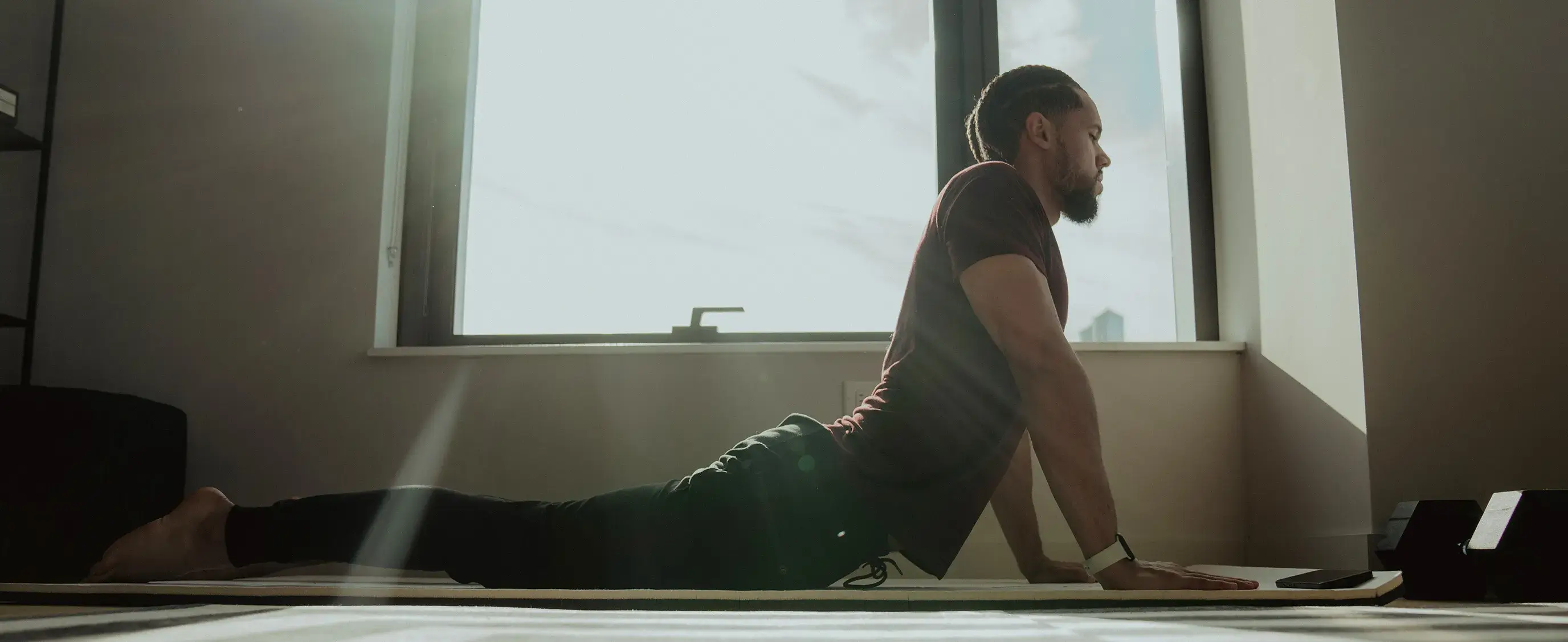Are you looking for a way to stay flexible and mobile as you age? Perhaps you want to improve your mobility before or after a surgery, or maybe you’re an athlete seeking recovery or performance improvement. Whatever your goal, one thing is for sure: you have to put in the work. Improving mobility is like any other physical endeavor: it takes time, consistency, and dedication. The good news is there are tools to make the process easier, and Mobility Exercises apps are at the top of the list. These easy-to-use applications help you stay on track with your mobility routine, allowing you to access guided programs right from your smartphone or tablet.
Pliability’s mobility app is a valuable resource for reaching your objectives. This digital tool features a library of mobility routines to help you recover, prepare for activity, and improve your overall performance.
What is Mobility Training & Why It’s Important
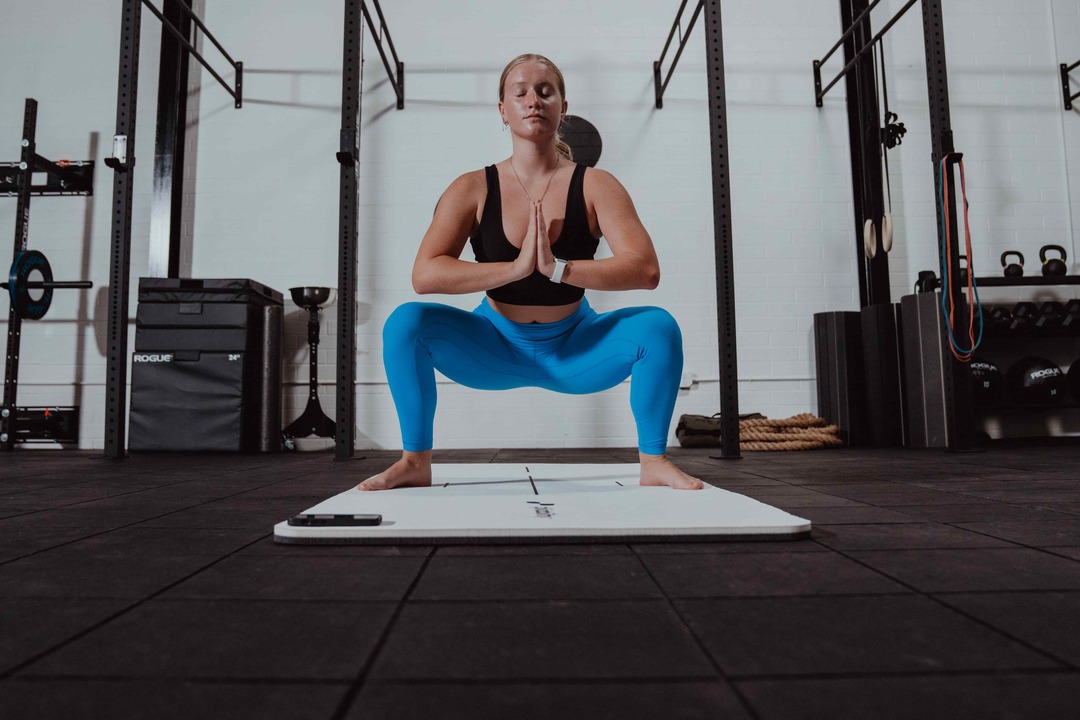
Do you ever feel stiff or creaky? After sitting for long periods, you notice it takes a little warm-up time before you can move freely once again without all the snap, crackle, and pop. Well, imagine moving through your day, fully present in every inch of your body—from the top of my head to each toe—as you easily carry out unrestricted movements. You can stretch, twist, and bend without any pain or stiffness. You can take long walks, stand for extended periods, and generally go about your daily life without needing to sit down and rest. That’s mobility.
Mobility means moving naturally, with control but without noticeable effort, as your body seamlessly responds in time to your intentions. When you have good mobility, you should experience no strain or pain as you move through your day, such as during these common daily actions:
- Bending to tie your shoes (which activates the hips and knees)
- Reaching for a glass on the highest shelf (which utilizes the shoulder joint and muscles)
- Walking up or down stairs (which requires healthy leg muscles and a full range of motion in the ankles)
Good mobility involves many components, including:
- Muscle strength
- Flexibility
- Joint health
- Motor control
- Body awareness (a type of sensation called proprioception)
- Agility and more
“Having good mobility allows you to perform the movements and exercise that’s a part of your daily life—and it can make you less likely to suffer certain injuries,” Peloton instructor Andy Speer says. “Mobility basically gives your body room to move.”
The good news is that mobility is primarily a lifestyle choice. The key to increasing and maintaining good mobility is regular physical activity. (That’s why children tend to have excellent mobility.) You don’t have to do cartwheels to boost yours; instead, try mobility training.
Mobility and Aging: Is There a Link?
Oh yes, there’s absolutely a link.
While the old adage, “if you don’t use it, you lose it,” most certainly applies to mobility, it’s not just sitting still for too long or skipping a workout or three that makes you less nimble and free.
Muscle mass decline, reduced bone density, slower nervous system responses—these are just a few of the natural, age-related changes that occur in the body and can affect how easily you move. On top of that, your mobility can be compromised by any of the oh-so-common chronic health conditions among Americans, such as:
- Arthritis
- Diabetes
- High blood pressure
- Cardiovascular disease
It’s no wonder that pain, stiffness, and reduced range of motion occur more frequently with age. But you don’t have to succumb to these difficulties. You can lessen their impact with mobility training.
What Is Mobility Training?
Mobility training involves exercises and movements that strengthen and lengthen your body, allowing you to move freely and efficiently. A mobility training class may include elements of various fitness routines you may or may not already be familiar with, such as:
- Dynamic stretches
- Foam rolling
- Bodyweight exercises
- Yoga
- Pilates
Flexible Range of Motion
Mobility training exercises are about much more than just being flexible. Done right—and regularly—mobility training can increase your range of motion, relieve tight muscles, ensure good posture and proper athletic form, and even prevent injury.
“Mobility classes are versatile and effective,” Andy says. “You can use them to start your day, end your day, as an active recovery on non training days, or as a low-intensity exercise when you want to move a little but not engage in a full workout. It’s a fun way to explore how well your body’s moving.”
Who Can Benefit from Mobility Training
Mobility training is ideal for men and women of all ages and fitness levels. It’s especially perfect for workout newbies or those who’ve tried but have been unsuccessful at exercising regularly. Once mobility improves, energy, drive, and ability to work out harder in other areas increase. Mobility training can improve athletic performance for athletes and regularly active adults and help ward off the dreaded but widespread overuse injuries.
Mobility Training vs. Stretching vs. Foam Rolling
Although mobility training might sound a lot like stretching or foam rolling, the focus and goal of each activity differ significantly.
Stretching
Stretching mostly focuses on lengthening muscle and other soft tissue to increase flexibility, typically in a few common problem areas of the body:
- Calves
- Thighs
- Low back
- Hips, neck
- Shoulders
Static stretching: extending a muscle and holding it there for about 10-30 seconds, like a toe touch—can help you recover after a workout or injury.
Dynamic stretching: Also known as controlled movements that mimic your activity or sport (think lunges or arm circles), is best done as a warm-up, prior to a workout or intense activity.
Foam Rolling
Foam rolling is used to relieve muscle tension. Using a hard foam cylinder, you use your body weight to press on specific points in your body by rolling the area back and forth over the cylinder.
Mobility Training
Mobility training utilizes techniques that address muscles, tendons, ligaments, joints, and their range of motion. It also involves a high degree of control, coordination, and awareness, effectively looping in the nervous system, which is the main line of communication between the body and brain.
Mobility training focuses on how you function and move as an entire body, rather than individual muscle groups. It also targets movement patterns fundamental to daily life and specific types of athletic performance.
Benefits of Mobility Exercises
Mobility training is not just about touching your toes. It’s about enhancing your overall movement ability, reducing your risk of injury, improving your athletic performance, and promoting lifelong physical well-being.
Adding mobility exercises to your usual workout routine can provide killer benefits, Andy notes. “It can improve your performance and help reduce stiffness and soreness afterward. It promotes good posture and reduces joint deterioration. Really, it’s an excellent way to add variety, physically and mentally, to your routine.”
Whether you’re a fitness novice or a seasoned pro, there is a wide range of ways mobility training can contribute to—and revolutionize—your health and fitness journey. Benefits of mobility training include:
- Improved flexibility
- Greater range of motion
- Muscle strength
- Joint health/movement without pain or stiffness
- Balance and stability (i.e., feeling grounded, centered, and steady on your feet)
- Better control, with every movement executed as intended
- Improved athletic performance
- Reduced likelihood of overuse injuries
- Less fatigue
- Reduced muscle tightness
- Added confidence and well-being
Flexibility and Mobility
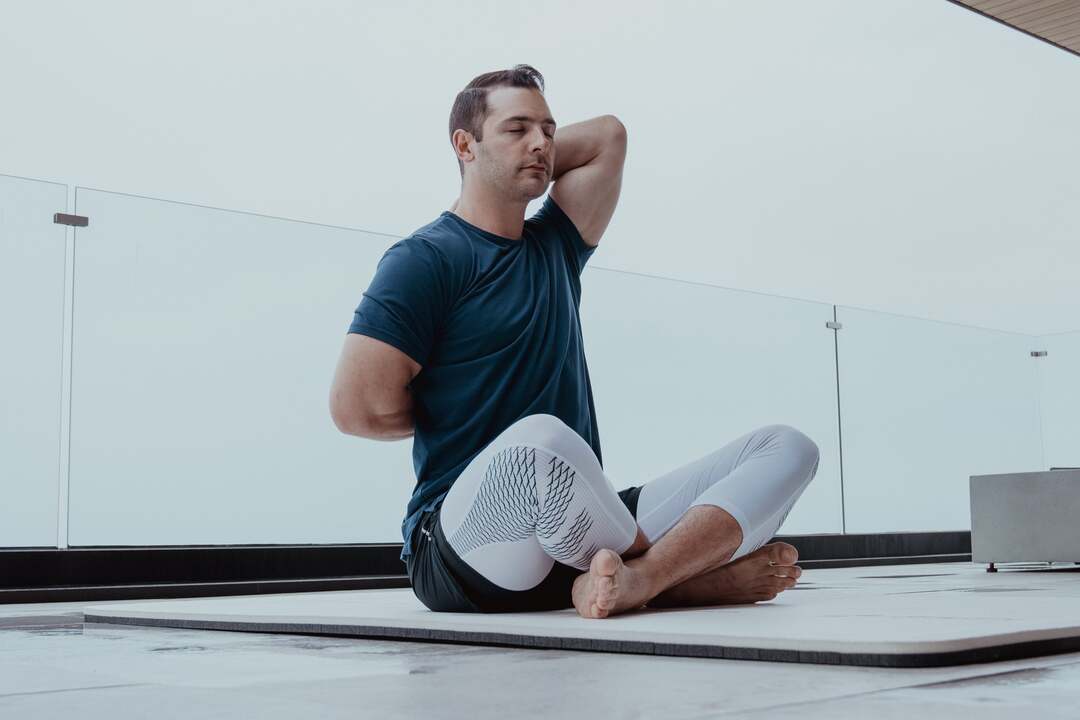
While flexibility and mobility are often used interchangeably, they are distinct physical abilities.
The Differences of Both
Flexibility is the ability of a muscle or tendon to lengthen or shorten when appropriate. It describes your range of motion around a joint that can be achieved without actively engaging your muscles. The greater your flexibility, the more the load on various muscle groups is balanced. Without flexibility, for example, some muscles may take on more of a load, leading to a muscular imbalance and making the weaker muscles more susceptible to injury.
Its Importance
Mobility goes a step further. It’s about how well you can control and move a joint through its entire range of motion. In our daily lives, we need both flexibility and mobility to move capably and effectively from task to task.
“Flexibility is the ‘lengthening’ of muscle between joints,” Andy explains. “Mobility is the active range of motion around a joint: how far you can move your leg around your hip, using your own muscles. Many mobility exercises mobilize the joint (including the capsule and connective tissue), while stretching your muscles in the process.”
Related Reading
- Ankle Mobility Exercises
- Shoulder Mobility Exercises
- Hip Mobility Exercises
- How To Improve Flexibility
- Thoracic Mobility Exercises
- Stretch Before Or After Workout
- Wrist Mobility Exercises
- Mobility Exercises For Beginners
- Best Stretching Routine
- Back Mobility Exercises
- Lower Body Mobility Exercises
- Leg Mobility Exercises
- Mobility Exercises For Athletes
Why Use a Mobility App for Mobility Training?
%20(1).jpeg)
Mobility training is a lot like flossing your teeth. You know it's good for your health, but it's still the first thing to fall by the wayside when you're short on time (or patience). A pre-made movement session on your phone is a great way to stay accountable to your muscles and joints, says Jereme Schumacher, DPT, a California-based physical therapist. The best routine, after all, is the one you do consistently.
Why Use a Mobility App?
The mobile phone is completely integrated into our society, so it makes perfect sense that a mobility app is also mobile. Many mobility exercise routines are meant to be done regularly. Day-to-day life often gets in the way of opening a calisthenics book about mobility or following a mobility program on your computer. A mobility app lets you take your exercises to work or on vacation.
Most mobility exercises don’t take nearly as long as a full calisthenics program. Your mobility app allows you to sneak in your training during a break. The app’s nature makes this program intuitive and convenient for most modern people. If you’ve used any other app on your phone, you’re almost certain to navigate a mobility app successfully. This is coupled with apps, like computers or laptops, allowing for a more interactive experience with HD training footage, all at the press of a thumb or finger.
Your Personalized Mobility App
Pliability offers a fresh take on yoga tailored for performance-oriented individuals and athletes. Our app features a vast library of high-quality videos designed to:
- Improve flexibility
- Aid recovery
- Reduce pain
- Enhance range of motion
Pliability provides daily-updated custom mobility programs for those interested in optimizing their health and fitness. It also includes a unique body-scanning feature to pinpoint mobility issues. If you're feeling limited by pain or your ability to move, Pliability aims to complement your fitness routine and help you move better.
Sign up today to get 7 days absolutely for free on iPhone, iPad, Android, or our website to improve flexibility, aid recovery, reduce pain, and enhance range of motion with our mobility app.
Difference Between a Mobility App and a Mobility Program
The difference between a mobility app and a mobility program is largely semantic. All mobility apps contain a mobility program.
Understanding Mobility Programs
The mobility program is the set of exercises you perform (if it’s a good program) that progress over time. Most mobility programs you can follow online via a website login or a mobility app. Practically, there is very little difference in using both phrases. When we say mobility program, we mainly refer to the interactive programs you can follow online.
Some mobility programs were built entirely with the mobility app in mind. These work more streamlined on your smartphone and don’t require a browser. Often, they can also be cached in your phone’s memory, meaning you can pre-download them beforehand and then follow the exercises even if you have no internet access.
Related Reading
- Golf Mobility Exercises
- Upper Body Mobility Exercises
- Mobility Exercises For Runners
- Can You Over Stretch
- Squat Mobility Exercises
- Functional Mobility Exercises
- Why Stretching Is Important
- Foot Mobility Exercises
- Arm Mobility Exercises
- Hamstring Mobility Exercises
- Elbow Mobility Exercises
- Rotator Cuff Mobility Exercises
- Bed Mobility Exercises
- What Are Mobility Exercises
- Full Body Mobility Exercises
11 Best Mobility Apps
1. Pliability: The Mobility App for Everyone

Pliability offers a fresh take on yoga tailored for performance-oriented individuals and athletes. Our app features a vast library of high-quality videos designed to:
- Improve flexibility
- Aid recovery
- Reduce pain
- Enhance range of motion
Personalized Mobility Programs for Optimal Health
Pliability provides daily-updated custom mobility programs for those interested in optimizing their health and fitness. It also includes a unique body-scanning feature to pinpoint mobility issues. If you're feeling limited by pain or your ability to move, Pliability aims to complement your fitness routine and help you move better.
Sign up today for seven days free on iPhone, iPad, Android, or our website to use our mobility app to improve flexibility, aid recovery, reduce pain, and enhance range of motion.
2. Mobility Manual: Best for Customization

Mobility Manual, founded by British Olympic weightlifter Sonny Webster, offers a range of programs designed to help you improve your mobility. Their online reviews are outstanding, and we were impressed by the level of customer support we received and the overall experience of signing up and gaining access to the programs. They are the only company we found that offered a completely customized plan designed specifically around your needs and requirements.
The Value of Mobility Manual's Customized Programs
For us, this offers huge value. Although it is priced higher than a more general mobility app subscription, the support and accountability you get with this one-off purchase mean you’re likely to see noticeable results quickly. This customized program lasts six weeks and will empower you with the tools, knowledge, and movements needed to help you move better.
Addressing the Challenges of Generic Fitness Programs
Many fitness programs and apps struggle to adapt their movements to different levels of experience, strength, and mobility/flexibility. “Beginner” means different things to others, so creating universally popular programs in the fitness space is often hard. A solution is to offer a more customized and personalized program that allows the customer to provide details on what they want to get out of it. This is where the mobility manual’s custom plan shines.
Mobility Manual's Flagship Training Program
Their flagship training program, “The Lifter’s Mobility Manual” is also a great place to start if the custom plan isn’t for you, mainly if your workout routine includes lots of Olympic lifts or weightlifting. Recently, the company expanded to include additional programs targeting specific areas, such as knees, shoulders, and spine. If you enjoy any programs, you can sign up for their ongoing membership, which resembles other apps like Pliability, GOWOD, and StretchIt.
Mobility Manual Membership
Mobility Manual’s membership is very well-priced for the features you get. It includes many live classes, community content, and access to all its programs. You can start a free trial and save 54% by opting for an annual membership if you like it. We selected Mobility Manual as the best for a customized mobility plan because we think this is where it stands head and shoulders above competitors.
Having an Olympian work with you to help you improve your athletic performance or move better is hard to compete against. This is why we think Mobility Manual is well-positioned to become a market leader.
3. StretchIt: The Best Overall Stretching App
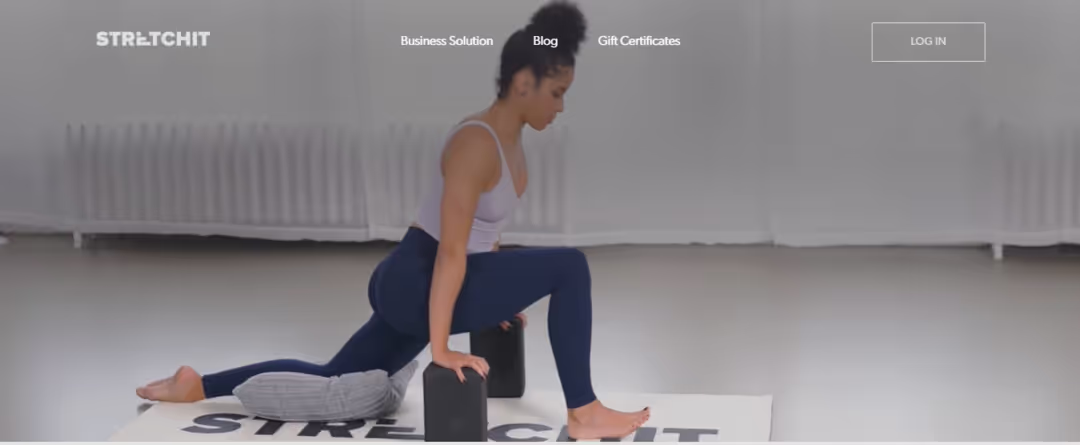
StretchIt claimed our top spot for the best overall stretching app, and it undoubtedly deserves mention for mobility apps, too. StretchIt is ideal for those who want to follow simple stretching routines primarily focused on flexibility and mobility.
Comprehensive Stretching App
We selected StretchIt as the best option for stretching. The app includes many challenges and programs explicitly designed to achieve certain flexibility and mobility goals, such as doing the splits or touching your toes, that come from stretching. As we highlighted in our StretchIt review, the workouts go beyond just “stretching” and include many mobility movements, balance training, and coordination skills.
Positive Reviews Using the App
The online reviews are also largely positive, with many users saying it’s helped with their flexibility training. StretchIt also offers a 7-day free trial, so you can test it before committing to a monthly or yearly plan.
4. VAHVA Movement 20XX: The Best for General Movement/

We recently discovered VAHVA, which includes various health and well-being programs. VAHVA Movement 20XX is a beginner-friendly introduction to better movement. It contains many mobility exercises as well as strength and conditioning workouts. If you’re a bit bored of regular gym workouts or perhaps aren’t reaching your goals by following such programs, then VAHVA could be worth considering.
A Thorough Movement Program
We selected VAHVA Movement 20XX as the best for general movement because it includes all sorts of flows and workouts designed to get you moving better without requiring any equipment. It’s also beginner-friendly; you can choose which movements suit your fitness level. Once you sign up for VAHVA, you will be given access to the online portal, which includes all the content and programs. This can be accessed on mobile and desktop. V
Pricing and Access
AHVA is different from other options in this list in terms of pricing. Instead of paying a monthly membership, VAHVA Movement 20XX requires a one-time fee that gives you lifetime access to the content. Although this appears quite pricey initially, the no-ongoing membership fee means that after a year or two, VAHVA probably becomes the cheaper option… but the initial cost may put some people off.
The Good and Bad
The technology system VAHVA uses is also quite basic (especially compared to some apps that offer very intuitive features). This shouldn’t detract from the fact that the content is very high quality, and you’ll learn many valuable lessons about how to move better and avoid injuries and pain.
5. The Movement Athlete: The Best for Calisthenics
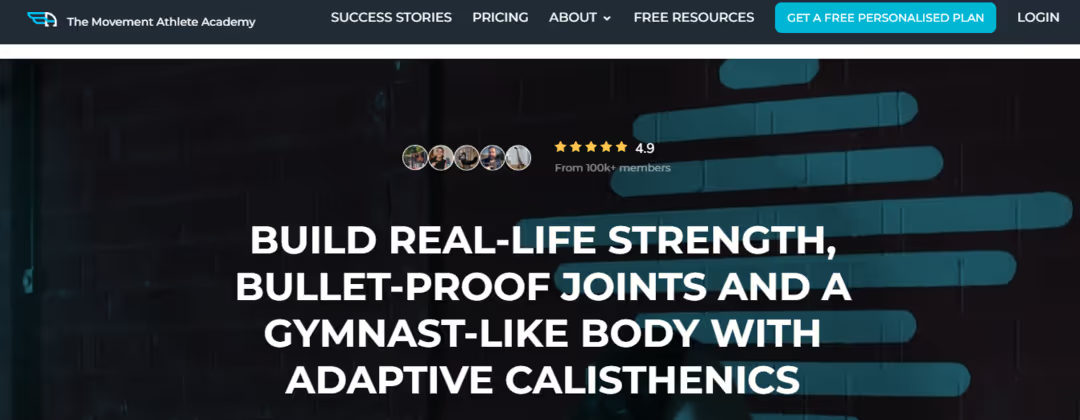
Like CrossFitters, the calisthenics community has prioritized mobility training and exercises as part of daily routines. Doing handstands, for example, requires strength and balance and a high shoulder range of motion. Consequently, our next top pick for the best mobility apps was born from calisthenics.
A Comprehensive Fitness App
The Movement Athlete is similar to VAHVA in helping improve all aspects of fitness, not just mobility. The difference between the two, however, is that The Movement Athlete packages this sort of training into more of a traditional app. Once you log in, you will have a dashboard similar to what you’d expect from an app. We like the “assessment” feature to help you understand your strengths and weaknesses.
Features and Benefits
There is also a strong community and support group. We selected The Movement Athlete as the best calisthenics program because it will introduce you to many skills and movements associated with calisthenics and bodyweight training. If you like that sort of exercise, then this app won’t disappoint. A feature we like is the requirement to “unlock” stages within the program, making the experience feel like a game.
Comparing to Other Fitness Apps
This helps boost motivation and encourages you to keep at it. The Movement Athlete is a complete fitness app/program, so if you solely want something for mobility, the drawback would be that you need to search through it all to find the relevant content manually. If, however, you like the idea of following workouts to allow you to do handstands or splits eventually, then this complete approach is likely the best option.
6. GOWOD: The Best Free Mobility App
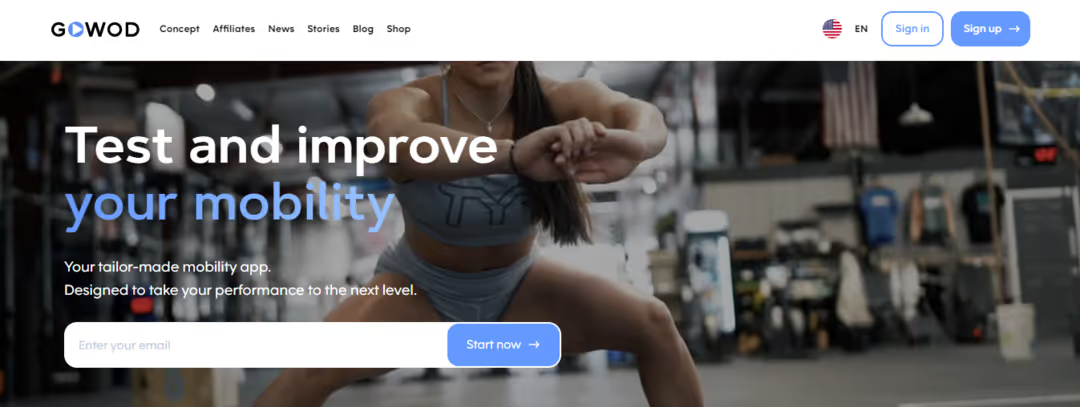
Historically, GOWOD has been Pliability's main competitor (previously ROMWOD). The apps are pretty similar, and until Pliability rebranded, both focused on mobility workouts for CrossFit athletes. The features and content are pretty identical, and personal preference will likely dictate your preference.
A Free Mobility App with Premium Features
Like Pliability, GOWOD has an impressive roster of users, including Matt Fraser (5 time CrossFit Games Champion). We selected GOWOD as the best free mobility app because the free content was head and shoulders above other basic, free apps. We really like the fact GOWOD has a free plan that allows you to get familiar with the app, although to enjoy the more impressive features, you will need a premium plan.
Comparing GOWOD to Other Mobility Apps
Nevertheless, the free plan still highlights useful movements and workouts to improve mobility. If you simply can’t afford any paid option, the GOWOD free plan will still provide good value for users. Unlike Pliability, GOWOD brands itself as a tool for CrossFit; however, anyone doing any activity or sports would benefit from the content, too.
7. Movewell: Build Mobility Routines Around Your Workouts
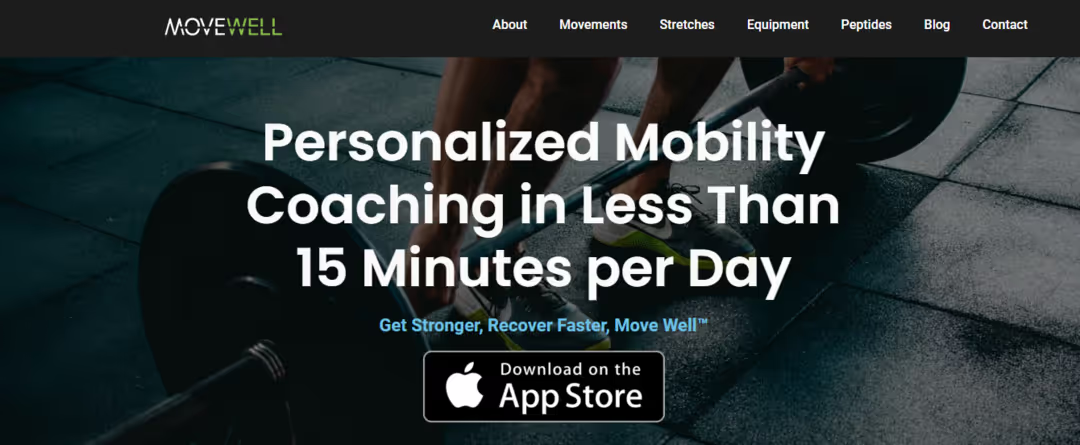
On a day you’re training your upper body, you probably don’t need to focus your entire warm-up routine on your legs, right? Or, when you’re planning to hit the squat rack, you won’t need too much upper-body prep. "Your mobility should match the workout you planned, otherwise you won't get as much benefit out of your dynamic warm-up," says Carolina Araujo, CPT, a New York-based NEOU fitness app personal trainer. MoveWell is an exercise app that builds your mobility routine around your planned exercises.
The app also offers morning sessions that can help ease you into your day. Some routines are body-weight only, while others require equipment like a foam roller. This app is free to download, and the basic version offers several built-in sessions. You can upgrade to a monthly subscription to access MoveWell's full library. You can access your sessions through your iPhone, iPod touch, or Mac.
8. Cali Move Mobility 2.0: The All-Rounder Mobility App
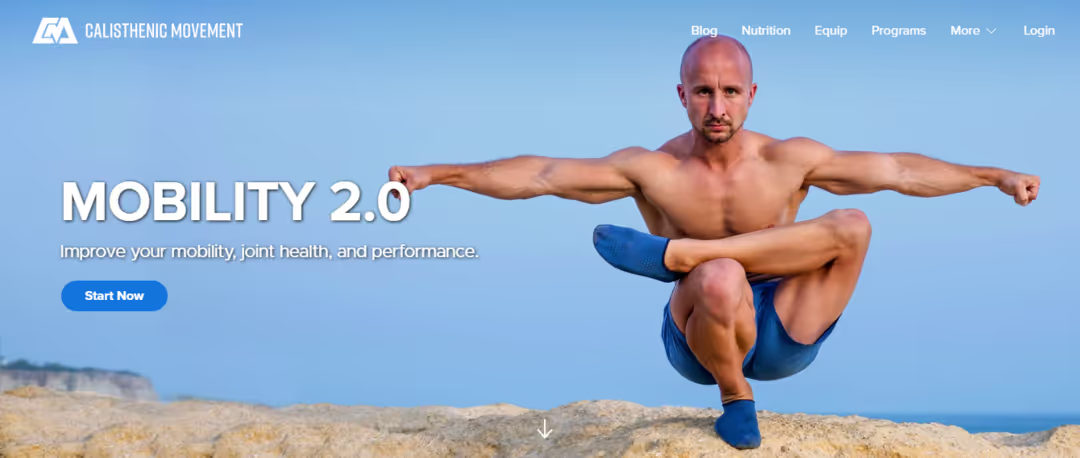
Cali Move Mobility 2.0 lands in the top position with some margin to its direct competitors. The Mobility 2.0 program has no prerequisites yet advances to a high degree of mobility over time. The 32-week program guides you from a preparatory phase to becoming a supple practitioner with an acute sense of balance and ample endurance. Progress is suitable for the average person, but you can slow down if you come from farther away.
A Comprehensive Mobility Program
By the end of the last level, you only need to repeat the last routines as maintenance. For beginners and advanced users seeking an all-around Mobility App, we highly recommend Cali Move’s Mobility 2.0 program. It is a very balanced program that will integrate perfectly with a Calisthenics program as it emphasizes agility, strength, and endurance. Cali Move is, of course, famous for its other high-quality calisthenics programs, like the Cali Move Complete calisthenics program.
Benefits of Cali Move Mobility 2.0
This mobility app integrates seamlessly with that regarding skill progression and general esthetics, learning curve, and philosophy. We found Mobility 2.0's sleek design very easy to navigate, and it emphasizes the HD footage of the train-along videos. Mobility 2.0 is browser-based. The webpage is designed to respond to your smartphone’s dimensions. While in use, you won’t notice any difference between a Mobility App and Cali Move Mobility 2.0.
9. Berg Movement App: The Calisthenics Mobility App
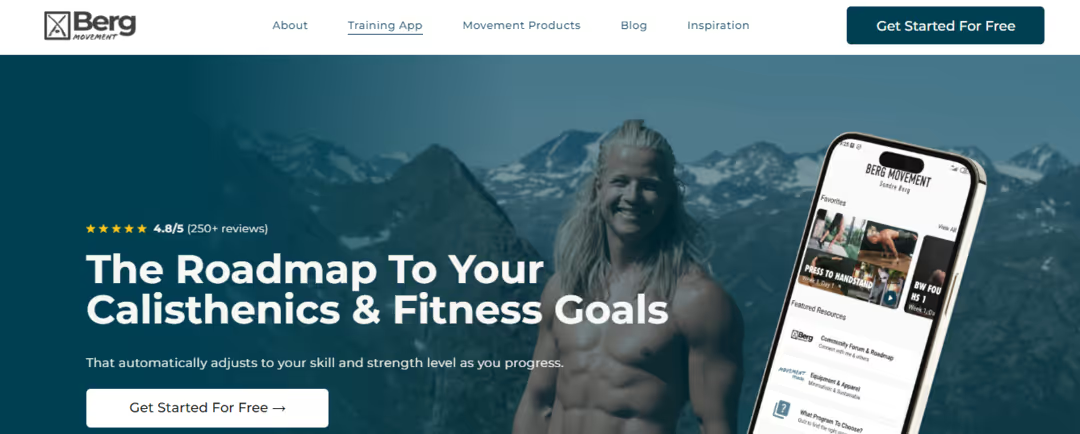
Starting Level: (beginner to expert)
Price:
- $19.99/mo.
- $99.99/6 mo.
- $159.99/y
At first glance, the Berg Movement App is a Calisthenics App that focuses on developing movement techniques. These techniques borrow from and, more often, copy from Mobility exercises to create a very efficient amalgamation of Calisthenics and Mobility exercises.
Your Personalized Fitness Coach
The general idea behind the Berg Movement App is to create something just short of your coach. The program can be tailored precisely to your needs, from a light Mobility App to heavy-duty muscle building. This customization is effortless to do. Exercises are grouped into modules, and each module describes what it targets. You build your workout using these modules as drag-and-drop building blocks.
Key Features and Benefits of Berg Movement App
Preexisting routines made with these modules are also available, which you can either follow as is or customize to your needs and goals. This makes the Berg Movement App extremely versatile and a one-package deal for both Mobility exercise and your Calisthenics routines. Navigating the sleek app is very quick and intuitive. All exercises feature train-along HD footage of Sondre Berg himself, eagerly displaying the techniques you must mimic.
10. The Ready State Virtual Mobility Coach: Best for Beginners
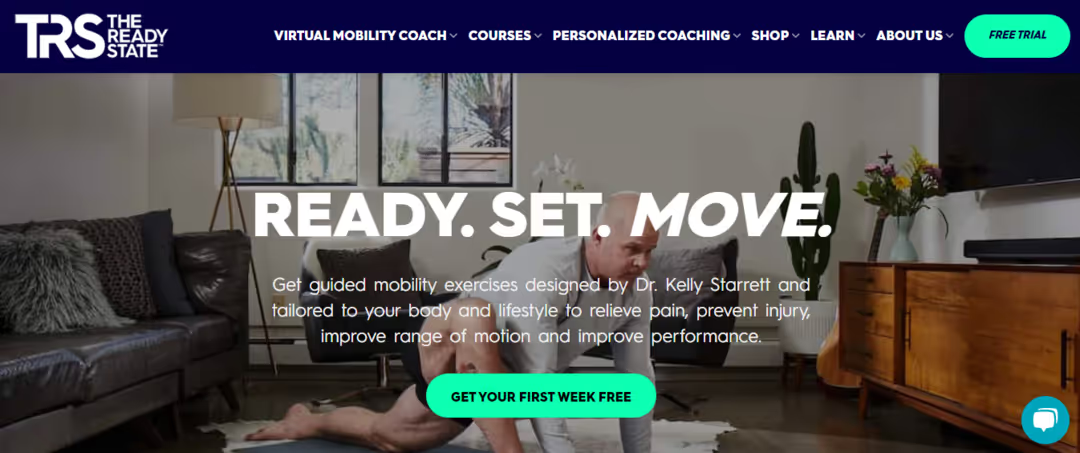
Starting Level: mobility impaired / beginner
Price:
- $14.99/mo.
- $12.99/mo. with an annual subscription
The Virtual Mobility Coach by The Ready State is one of the most well-researched and physiotherapeutically sound mobility apps we have ever used. Designed by Dr. Kelly Starret (author of Becoming a Supple Leopard), this app can transform you from a mobility-impaired person to a highly mobile, supple, and agile athlete. Many in professional sports leagues and even the military rely on the Ready State for mobility exercises.
The Virtual Mobility Coach brings all that professional expertise together into your pocket. The Virtual Mobility Coach consists of 4 chief parts:
- Mobility test
- Automatically created Mobility exercise routine based on that test
- Daily maintenance exercises
- Pain relief section
You can use this app even if you are currently mobility impaired or experiencing pain (we advise you to consult your physician or physiotherapist beforehand). The Ready State’s Virtual Mobility Coach functions best as a standalone Mobility App for people who want to regain and maintain mobility or want a Mobility routine alongside a dynamic sport like football, soccer, basketball, baseball, martial arts, and so on.
11. Primal Mobility: The Strength-Based Mobility App for Barbell Athletes/
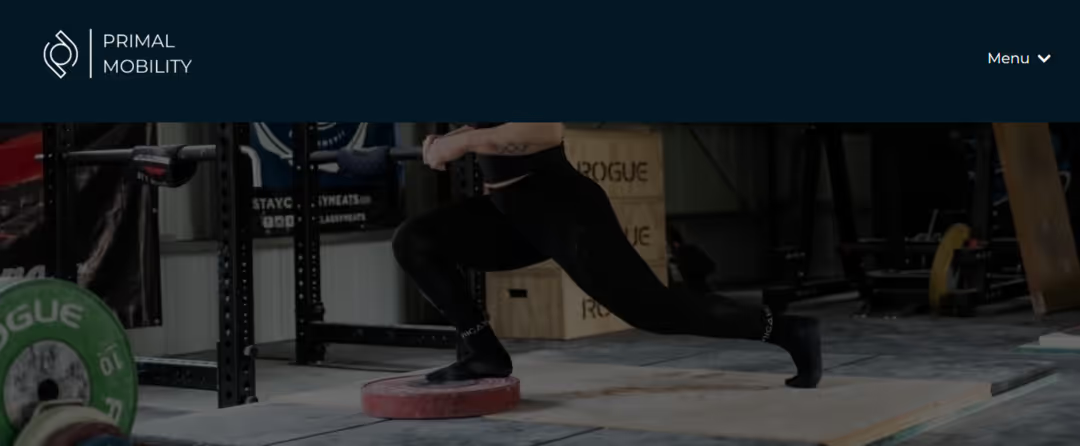
We’re the only strength-based mobility program a barbell athlete will ever need because we focus on building strength in the end ranges of the joints—where it matters most. Unlike traditional mobility routines, our approach targets the areas that directly improve your stability, control, and power under the bar. By developing strength at these critical ranges, you'll lift heavier, move more efficiently, and eliminate pain, giving you the edge in training and competition.
Who They Serve
- For Athletes: We have your back if you’re serious about your performance in and out of the gym. Get back to the barbell without fear of pain. Feel confident under the bar.
- For Coaches: Become the go-to strength-based mobility expert by understanding movement mechanics better than 99% of coaches in the industry.
Confidently assess, analyze, and create strength-based mobility programs to help your clients escape pain.
Difference Between Mobility and Stretching Apps
Stretching and mobility training improve performance, recovery, and injury prevention. However, they aren’t interchangeable. Stretching improves flexibility, while mobility training enhances the quality and range of movement in everyday activities.
Stretching: What It Is and Why It Matters
Stretching focuses on muscles. Static stretching involves holding a stretch to improve flexibility, while active stretching uses strength to stretch muscles and tendons. Stretching is primarily performed to improve your flexibility before and after workouts.
Mobility: What It Is and Why It Matters
Mobility targets joints. It refers to the ability to move your joints through a range of motion, particularly during dynamic activities that require strength and control. Improving your mobility will enhance your performance in physical activities, helping you achieve a greater range of motion, remain strong and controlled while performing movement, and reduce your risk of injury.
3 Things to Consider Before You Choose a Mobility App
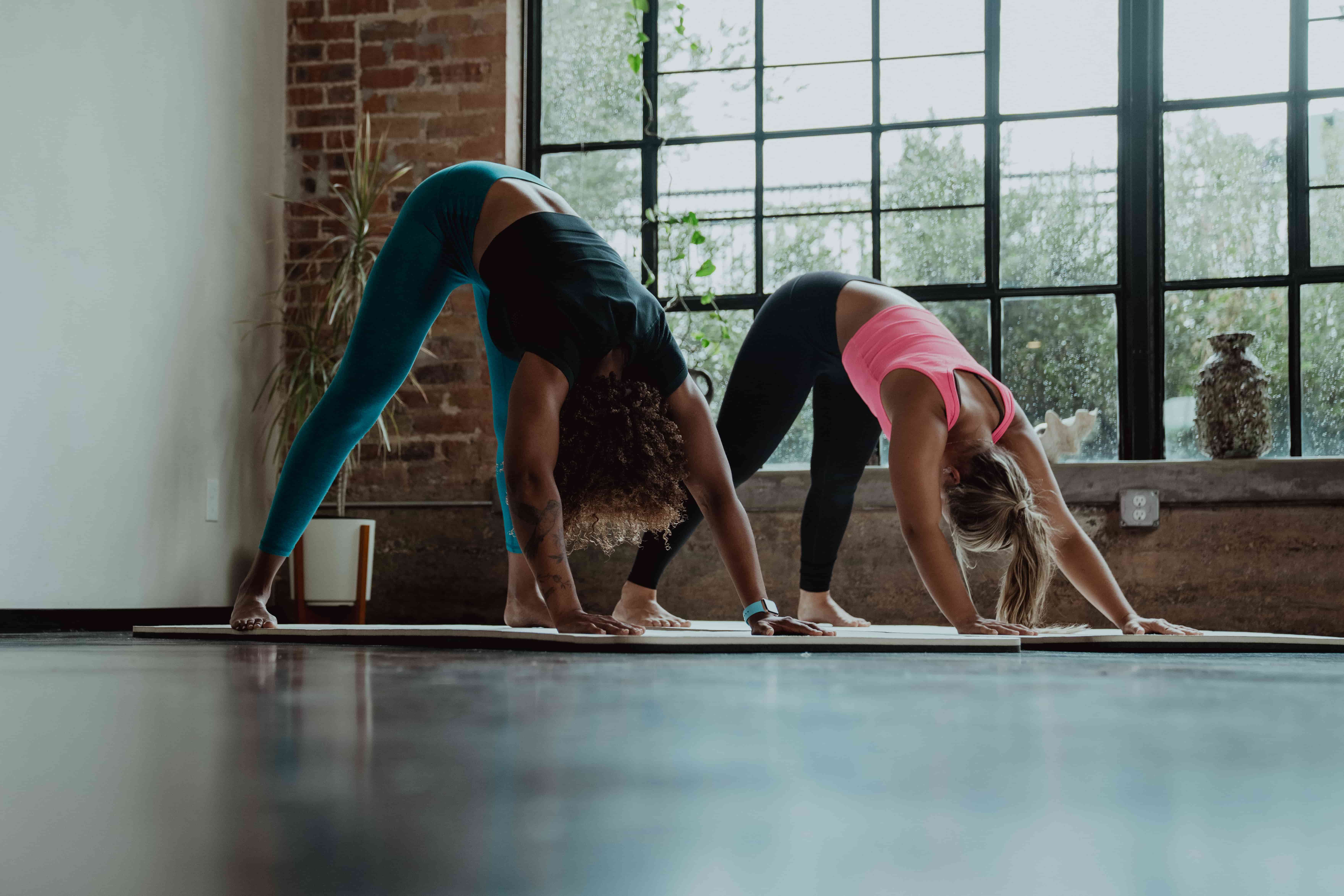
1. Daily Programs vs. Pre- and Post-Workout Guidance: What Sounds Better?
Many folks want to do full flexibility and mobility workouts. If that sounds like you, an app that offers daily programs will help you develop a routine for improving your performance and recovery. Meanwhile, those who need a little inspiration for pre-workout warm-ups or post-workout cooldowns prefer a more training-focused app that gives suggestions based on that day's workout.
2. How Do You Plan to Watch It?
While these apps work on smartphones, they aren't all compatible with tablets or TVs. If you prefer to watch videos on a big screen, verify that your app of choice is compatible with your favorite devices.
3. How Much Do You Want to Spend?
Monthly memberships can add up, especially when you're subscribed to several other apps. Take advantage of the free trial app offer and remember to cancel if you're not a fan of the program, Araujo says. "For some of my clients, paying for something each month actually helps them stay motivated," she says. "So, if you're the type of person that will stick to the plan if money is in the mix, I think a mobility app is a great investment for your health."
Pliability: Your Personalized Mobility App
Pliability offers a fresh take on yoga tailored for performance-oriented individuals and athletes. Our app features a vast library of high-quality videos designed to:
- Improve flexibility
- Aid recovery
- Reduce pain
- Enhance range of motion
Personalized Mobility Programs for Optimal Health
Pliability provides daily-updated custom mobility programs for those interested in optimizing their health and fitness. It also includes a unique body-scanning feature to pinpoint mobility issues. If you're feeling limited by pain or your ability to move, Pliability aims to complement your fitness routine and help you move better.
Sign up today to get 7 days absolutely for free on iPhone, iPad, Android, or our website to improve flexibility, aid recovery, reduce pain, and enhance range of motion with our mobility app.
Is it OK to Do Mobility Everyday?
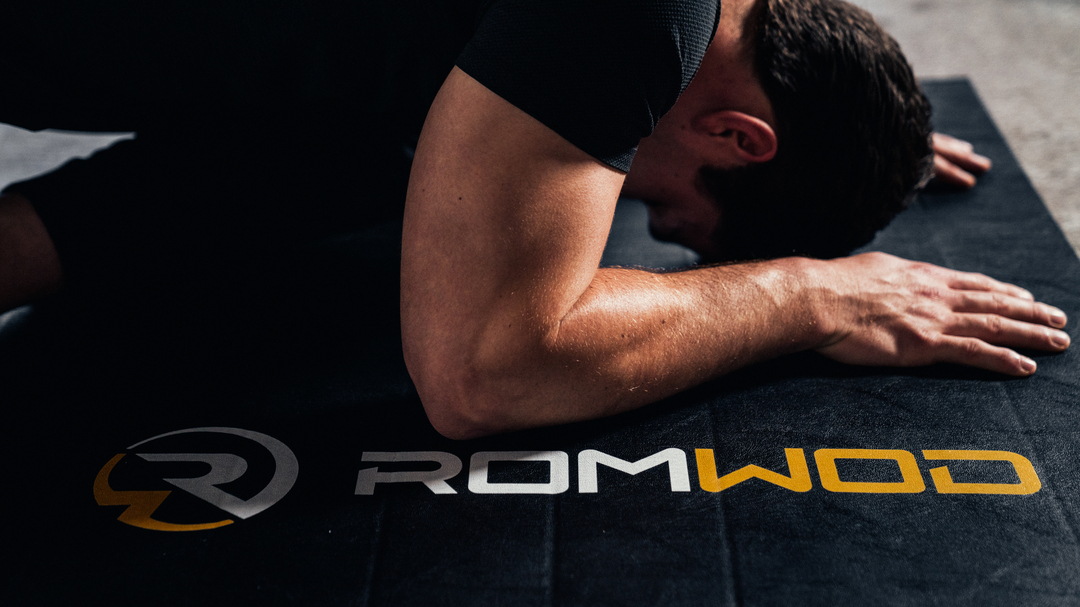
Don’t worry. Daily mobility exercises are generally safe and even beneficial. For example, mobility work can be done gently to support joint health and reduce stiffness, unlike high-intensity strength training that requires rest days. Mobility exercises can make you feel better and move better.
“It’s more beneficial to practice mobility five times a week, for 5 to 10 minutes each time, than it is to do an hour-long session once a week,” Andy says. “For example, you might do 5 to 10 minutes of mobility training daily, and make two or three of those days a longer practice, like 15 to 30 minutes. It will have you feeling great and moving well.”
Customize Your Mobility Training
That said, the frequency and duration of your mobility training depend on you, your current fitness level, your fitness goals, and whether you’re dealing with an injury or any problem areas. You might start with a few times a week and build up. Ideally, you’ll want to include some mobility training every day.
Regarding mobility training, the general rule is to do it as often as you need to, but to begin slowly, working on just one or two areas of the body. Maybe that’s your shoulders and spine or your knees and ankles. But it’s essential to focus on quality over quantity when it comes to mobility exercises. Start by doing fewer exercises and concentrating on using proper form. Don’t rush through the exercise set list. As always, listen to your body and modify or skip anything that causes pain.
Consistency is Key
“Consistency is key,” Andy explains. “Do it however it best fits into your life. If stacking mobility training with your other workouts is best for your schedule, then do that. Doing the longer mobility classes on days between more intense trainings will help your recovery between workouts.”
Tracking Your Mobility Progress
Now that you’ve started on the path to greater mobility and better overall fitness, here are a few takeaways to consider as you take mobility training classes on the Peloton App.
Patience is Key
Like any type of effort, mobility training takes time and consistency. The more regularly you do it, the better the results.
Slow and Steady Wins the Race
Don’t be in a hurry to get to the advanced-level classes. Make sure you master the basics before moving on. Your body will thank you.
Prioritize Proper Form and Control
It’s far better to engage in a small range of motion but perform the exercise correctly than to do it incorrectly while engaging a larger range of motion.
Integrate It Into Everything You Do
The best way to ensure you get the most out of your mobility training is to continue with your usual workout regimen and add mobility exercises wherever it works best for you, such as stretches first thing in the morning, part of a cool-down routine at night, or wherever and whenever possible. Just 10 minutes at a time can build up and make a big difference.
Listen to Your Body
Mild discomfort during a stretch is normal, but sharp or intense pain is not. Stop if you feel pain.
Related Reading
- Gowod Vs Pliability
- Tennis Mobility Exercises
- Weighted Mobility Exercises
- Cervical Mobility Exercises
- Resistance Band Mobility Exercises
- Rib Mobility Exercises
- Glute Mobility Exercises
- Best Yoga App
- Mobility Apps
- Stretching Apps
- Chest Mobility Exercises
- Glute Stretches
- Gluteus Medius Stretch
- Glute Stretch
- Cervical Radiculopathy Exercises
How Long Does It Take for Mobility Exercises To Work?
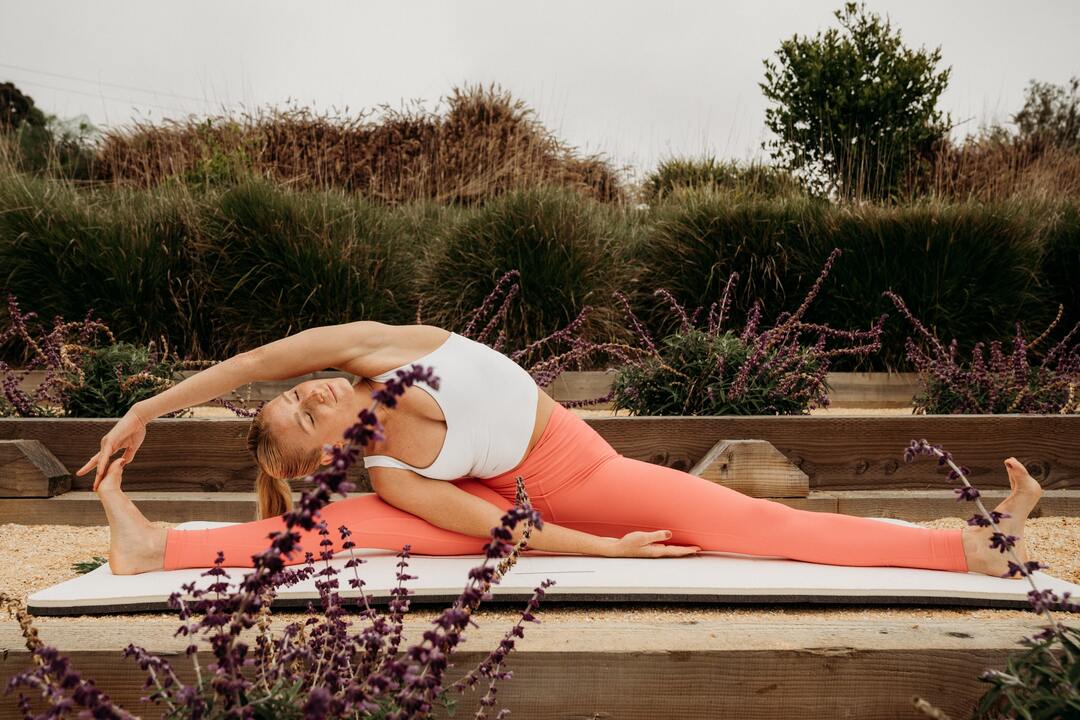
Like any strength and conditioning program, consistency is crucial for achieving long-lasting changes in mobility and flexibility. Aim for regular training sessions, gradually increasing the intensity as you progress. While individual frequency may vary based on specific goals and fitness levels, a good baseline is incorporating mobility training 2-3 times per week.
If you are doing other forms of exercise, balance your total workload so you aren’t doing too many things at once and unable to devote the required focus to each one, which will yield no results in any domain.
Mobility Training Intensity: A Balancing Act
Mobility training can be intense, especially when incorporating loaded stretching techniques. While it’s essential to challenge yourself to see progress, paying attention to your body’s signals is equally essential.
- Avoid pushing yourself to sharp pain, as this could indicate potential injury. Discomfort during loaded stretches may be expected, but listen to your body and modify your approach if needed.
- If you are a beginner, remember to start slow! Adding one day/week of mobility training can yield results, especially if it’s a new stimulus.
- For experienced lifters and fitness enthusiasts, try two days/week to start and up to three days if needed.
The frequency depends on multiple recovery variables, so remember if you are getting results, there is no need to try and change things up to get results even faster.
Improve Your Flexibility with Our Mobility App Today | Get 7 Days for Free on Any Platform
Pliability is an app that offers personalized mobility routines to help athletes recover, improve flexibility, and reduce pain. The app features a library of video tutorials focusing on increasing the range of motion through dynamic warm-ups, cool-downs, and targeted mobility routines.
With Pliability, you can scan your body for mobility issues and receive customized routines to help you address your specific limitations. Pliability is a great place to start if you want to enhance your performance.
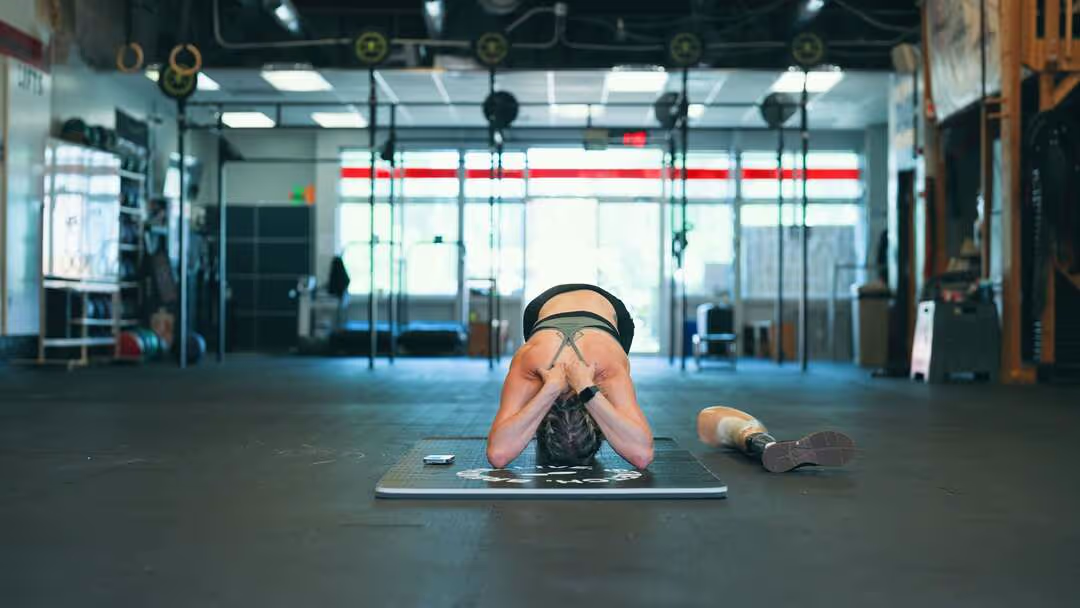
.jpg)

.jpg)
.jpg)
.jpg)
